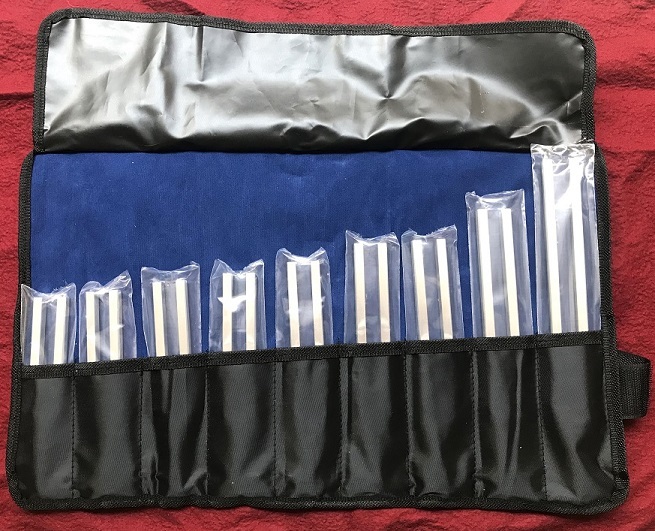
He shows the various modes of vibration travel from an unweighted 426hz tuning fork from a physics standpoint and included a polar plot to show how sound pressure levels (amplitude) are higher in the direction parallel to the tine movement compared to the perpendicular direction. Russell, PhD., clarified this concept of parallel and perpendicular sound travel from tuning forks on a web page (see link below) he created for his graduate program in acoustics at The Pennsylvania State University. The weights also add more torque to the tuning forks to make the stems flex and vibrate stronger due to the uneven weight distribution.ĭr. At our VFRT training, we also include a discussion about the weight distribution of the tuning forks and how the mechanical dynamics of these forks create additional bending of the metal to create many different oscillations beyond the stated frequency of the tine movement. Although you can still hear the vibrations transmitting near the tines, the strongest vibrations are focused near the base. The weighted tuning fork has weights on the tines to force most of the vibrations down the tines and into the stem. This is why NEHC does not use the unweighted tuning fork on the body.

Some of the vibrations are sent out at a 90 degree angle to the tines, and very little vibration is available at the base of the fork.

What you can see in the images is the difference in the way an unweighted tuning fork is designed to send most of its vibration out into the air at the same direction as the moving tines. Obviously these images are a guess and not a direct representation of the actual range of a tuning fork.
Solfeggio weighted tuning forks software#
I used a 3D modeling software to create a representation of the weighted and unweighted tuning forks to show how they are different in the way sound travels away from the forks. As long as our Sonar sensors were within the colored “bubbles” then we should be able to detect and identify the source beyond the noise in the background. One type of predictive modeling involved a visual representation of sound traveling outwards from a source to determine where the sound stopped or dissipated beyond the detection capability of the sensor. Over the years I probably generated thousands of predictive models showing how sound travels in various parts of the ocean with a range of frequencies and sources. Molded forks are unacceptable for the Alexander Vibrational Sound & Energy Therapy TM due to the inferior sound quality and loss of sustained ring tones.During my 22 years in the Navy specializing in underwater acoustics, one of my jobs was to determine how far a particular vibration source would travel through water. Many cheaper forks, especially those made in China or India, are made in molds. Machined forks produce the best quality sound. The aluminum forks produce harmonic overtones - sounds over sounds- and that’s part of the magic! Tuning forks made from steel do NOT produce these. Quality will affect the outcome of your sessions therefore, Tuning Forks should be made of aluminum or steel. The crystals will amplify and pulse the energy current running through them. Adorned with crystals on each end to correspond to each chakra center, users find better identification during sessions. The forks can be held gently to allow the energy to direct the forks rather than the practitioner. Practitioners of The Alexander Method® using these tuning forks will be provided with rubber holders for proper use in this modality.

5% of the frequency stamped on the fork at 20 degrees C. They are designed with premium grade aluminum alloy, and with proper care, will last for years! All forks are guaranteed to be tuned within. Tuning forks for the Alexander Vibrational Sound & Energy Therapy TM are custom made in the USA for the medical community.


 0 kommentar(er)
0 kommentar(er)
